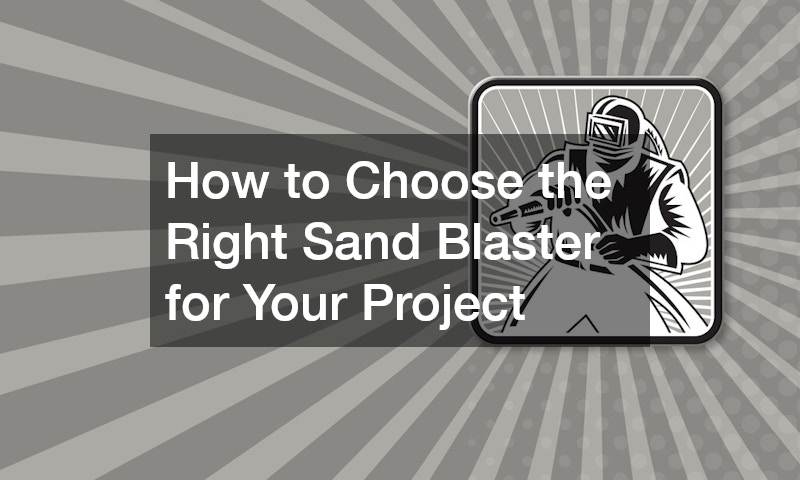
In the world of sandblasting, choosing the right equipment can be a daunting task due to the variety of options available. This article aims to simplify this process by providing detailed insights into the most common questions and topics people consider when selecting a sandblaster for their specific projects.
Sand blasters come in several types, each designed for a specific application and level of intensity required. The most common types include gravity-fed, siphon, and pressure sand blasters.
Video Source
Gravity-fed sand blasters are typically used for smaller projects where precision is key, while siphon sand blasters are more versatile and suitable for moderate use.
Pressure sand blasters, on the other hand, are best suited for large-scale industrial applications due to their powerful performance and efficiency. These machines can handle tougher jobs, involving larger surfaces or heavier material accumulation. Understanding these types helps you align the equipment with your specific project needs.
Moreover, there are portable options, ideal for those who require mobility across job sites, and cabinet models, which provide a contained environment perfect for reclaiming media and minimizing mess. Each type caters to different user conveniences and project demands.
The material of the surface you intend to work on significantly influences your sand blaster choice. For instance, delicate surfaces like wood require a fine blast and potentially softer media to avoid damage. Hydration or humidity in the material can also affect how the sand blaster performs.
Harder surfaces such as metal or concrete may require more aggressive media and a higher-powered sand blaster to effectively remove rust, paint, or other coatings. Each material's responsiveness to media will determine the intensity and duration needed to achieve the desired result.
Whether it’s rust removal from metal parts or rejuvenating brick surfaces, selecting the correct sand blaster ensures efficiency and effectiveness, preventing unintended surface damage while achieving lasting results.
Selecting the right abrasive media is crucial. The choice of media affects the finish of the surface and the rate at which the work is completed. Common media types include glass beads, aluminum oxide, and silicon carbide, each offering different levels of abrasion and finishes.
For softer materials, a medium like walnut shells can provide a gentle finish, whereas more robust materials might necessitate the use of steel grit or aluminum oxide for a more vigorous cut. Environmental considerations also play a role, as some media are recyclable and more eco-friendly than others.
In addition to understanding the substrate, testing sample patches with different media can help you determine what achieves the best result without compromising the integrity of the material.
Safety is paramount during sandblasting operations due to the risks involved with abrasive and high-pressure media. Operators should always wear appropriate protective gear, including goggles, gloves, and respiratory protection, to mitigate exposure to dust and potential debris.
Ensuring a well-ventilated workspace reduces inhalation of harmful particulates. Additionally, regular maintenance checks on equipment can prevent accidents and prolong the machine's life. Potential hazards include equipment malfunction, media ricochet, and surface damage.
Following strict safety guidelines and utilizing only recommended safety equipment helps in preventing accidents and health risks, thus ensuring a safe and controlled sandblasting environment.
Maintaining your sand blaster includes regular checks and cleaning to avoid clogs and ensure optimal function. After each use, inspect hoses, nozzles, and fittings for wear or damage, replacing any worn parts to prevent failures during operation.
Storing your sand blaster properly extends its lifespan. Ensure that all components are clean and dry to avoid rust or degradation. If storing for an extended period, consider disassembling parts to prevent media settling and solidifying in hoses or other pathways.
Proper storage in a climate-controlled environment minimizes the risk of equipment damage due to temperature and humidity extremes, thereby preserving functionality for future projects.
Choosing the right sand blaster for your project involves understanding the different types available, the surface material you are working with, selecting the appropriate abrasive media, following safety precautions, and maintaining your equipment. Armed with this knowledge, you can confidently select the perfect sand blaster to meet your needs and achieve the best results for your projects.
.